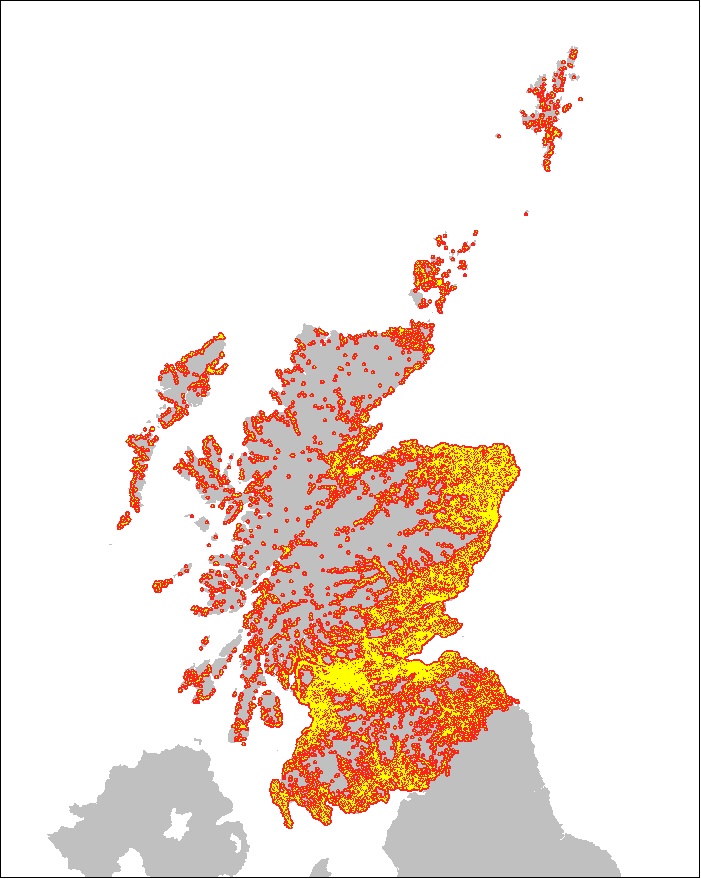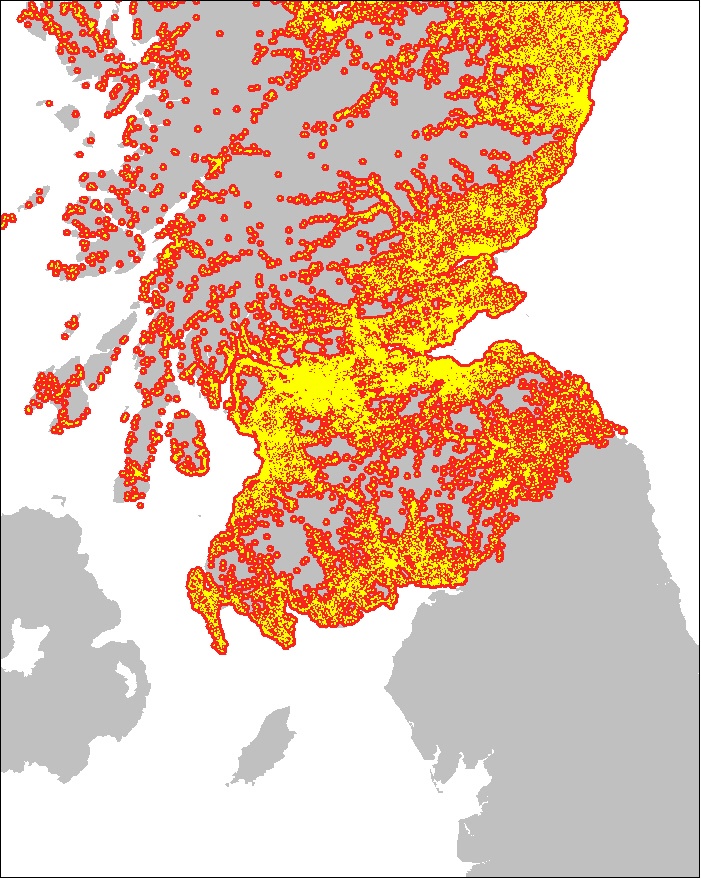The planning application for wind turbines at Ascog Farm has created a lot of controversy and heated discussion locally.
Much of this, of course, is based around turbine location which in turn informs opinions about views, noise, ecology (covered in the Environmental Statement, 2.9MB PDF) and even suggested health effects.
A frequently mentioned concern in the onshore wind debate is the idea of a ‘minimum separation distance’ between residential properties and wind turbines.
Interestingly we understand the minimum separation distance between housing and gas-fired power stations is only 100 meters. Nuclear power plants are often also located in reasonably populated areas. Hunterston B nuclear plant is only 10 miles (as the crow flies) from Rothesay on the Ayrshire coast opposite. Either of these alternatives tend to do a bit more damage if they go wrong than wind power which some – but by no means all – people tend to find merely visually unappealing.
Confusingly, the situation regarding minimum separation distances between housing and wind turbine generating plant is less clear. House of Commons Library Standard Note SN/SC/5221 (5 July 2012) states “People are often concerned that wind farms might be too close to houses. There are no statutory limits in the UK.”
Indeed, in different nations of the UK there is different ‘guidance’. The note continues:
| England has no separation distance, although noise limits suggest a minimum separation distance of 350 metres for a typical wind turbine. Scotland has guidance suggesting 2km and Wales suggests 500m between a wind turbine and housing. |
This raises the awkward question – given that the UK Government, Scottish Government and Argyll & Bute Council all back the development of renewable energy schemes (including onshore wind – ‘currently the cheapest of the renewable technologies’) to help combat climate change – where could, should, can or will wind turbines actually go?
When we embarked on the feasibility assessment at Ascog over two years ago we used a 450m buffer around neighbouring properties. Towards Zero Carbon Bute later conducted a study of the whole of Bute (with AECOM) that happened to use a 500m buffer. The idea of a larger 2000m ‘separation distance’ from turbines is frequently postulated by anti-wind campaigns and in Scotland may arise from the confusingly worded planning guidance mentioned above.
Out if interest, let’s look at the impact on potential site availability if there were 500m (yellow) or 2000m (red) minimum separation distances around properties. Our maps show analysis for Scotland, the Central Belt and In and Around Bute.

Where in Scotland?
(Red=2000m radius, Yellow=500m radius around postcodes)
CodePointtm © Ordnance Survey
In Scotland at 500m (yellow) most areas near any population (which consumes the power…) would be out of the question for turbines. At 2000m the effect is even greater. There’s lots of hill country where they could go, of course, but do people really want turbines placed in truly remote areas? The John Muir Trust thinks not. We agree. And because these areas are also mostly National Parks they would automatically be out of the question too. Even were these the right places to be building wind turbines the cost of getting the electricity into the grid to feed Scotland’s population centres would be so great no-one would ever build them…

Where in the Central Belt?
(Red=2000m radius, Yellow=500m radius around postcodes)
CodePointtm © Ordnance Survey
In the Central Belt (above) the effect of minimum exclusion zones is even clearer. If we’re to have green energy here it’s going to have to be squeezed in to tiny little pockets…

Where In and Around Bute?
(Red=2000m radius, Yellow=500m radius around postcodes)
CodePointtm © Ordnance Survey
In and Around Bute a 500m or a 2000m separation distance likewise wipes out most potential sites. On Bute it looks like the only place to put turbines is the North end of the Island… but that’s a National Scenic Area so that isn’t possible either!
Given that insufficient wind speeds and a whole lot of other factors – such as sensitive landscape areas, national parks, SSSIs, communications links, airport radar, MoD overflight and more – knock out even more potential sites therein lies the problem for politicians, planners and populations.
The Scottish Planning Policy (2010, para.190) states:
When identifying areas with potential constraints on wind farm development, planning authorities should consider the following:
A separation distance of up to 2km between areas of search and the edge of cities, towns and villages is recommended to guide developments to the most appropriate sites and to reduce visual impact, but decisions on individual developments should take into account specific local circumstances and geography. Development plans should recognise that the existence of these constraints on wind farm development does not impose a blanket restriction on development, and should be clear on the extent of constraints and the factors that should be satisfactorily addressed to enable development to take place. Planning authorities should not impose additional zones of protection around areas designated for their landscape or natural heritage value. Scottish Planning Policy (our emphasis) |
The Scottish Government aim[s] to reach a target of 500 megawatts of community and locally-owned renewable energy by 2020.
Given that neither many (any?) community groups or many individual landowners prepared to engage in community-benefit schemes own vast enough tracts of land perhaps up to 2km away from any housing to put turbines in the middle of – even if all the other conditions for siting the machines are met – this looks like it could be a bit of a tough ask. That’s presumably why the Scottish Planning Policy also allows for consideration of ‘specific local circumstances and geography’.
It’s up to the planners at Argyll & Bute Council and/or Scottish Ministers to make a decision about the plans at Ascog but going forward – if we are to ‘decarbonise’ our energy generation systems – policy-makers will have to answer some tough questions about where things can be sited and the reasoning behind those locational decisions.
Britain’s electricity consumers have a long history of ‘switching on the lights’ and not thinking about where the power is coming from, because historically it has come from some gigantic far off power station in a (former) coalfield or a ‘remote’ nuclear plant somewhere by the coast. Moving forward, we are likely to see much more ‘distributed generation’ where power is produced at many more sites and those sites are close to the populations consuming the power. This, in turn, means we’re going to be able see the generating plant!
Quite a bit of it will be wind generating plant…